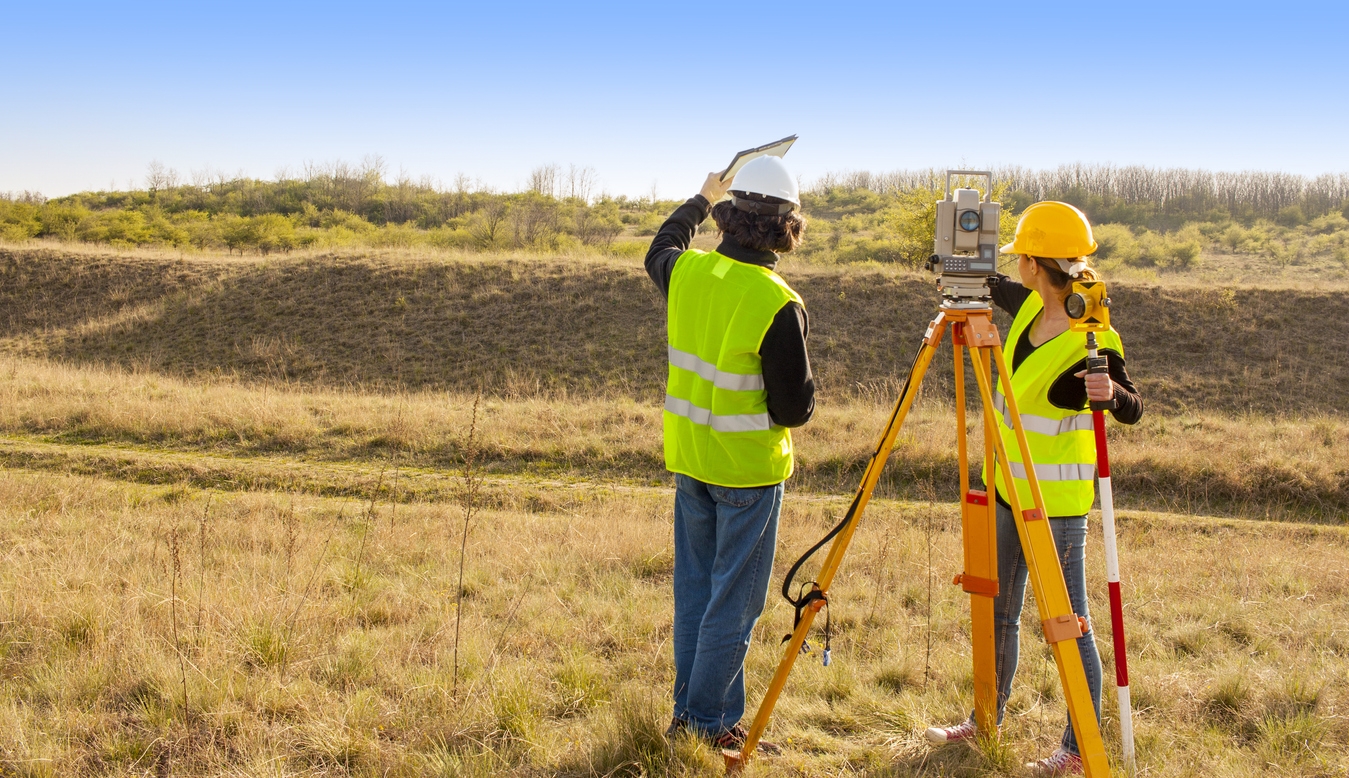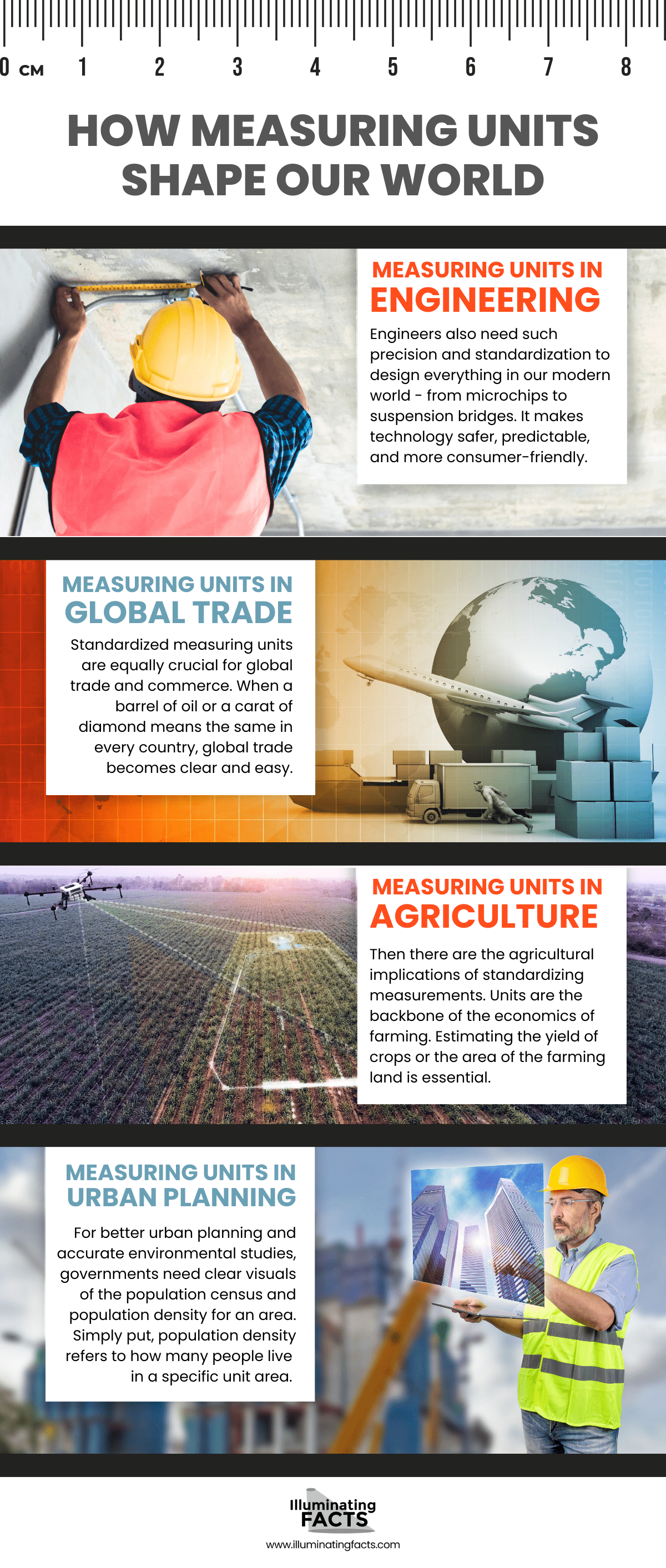The humble measuring spoon, watch face, bathroom scale, or yardstick seem as ordinary as ordinary can get. But they represent a language fundamental to human civilization. It’s not a language of words, sounds, or images. It’s far more subtle and silent. It’s the language of measurement units. Often underappreciated, measurements have quietly orchestrated our world for millennia. From the size of an ant to the size of a star, measurement units are the overlooked language that helps us communicate the properties of our world with each other.
Trade, commerce, engineering, scientific advancement, space exploration, and technological innovation are all tied to the fabric of measurements. And they’re just as essential to our day-to-day lives. We use measurement units as tools to cook, track our health, budget, travel, build our homes, and manage finances. Measuring units are the bedrock on which progress is made. [1]
The history of measurement is the history of quantifying our universe. And the story of how measuring units originated and evolved has hidden depths worth exploring. In this post, we’ll delve into the fascinating origin, evolution, and standardization of measuring units. The appreciation of their silent power will help us understand just how vital and far-reaching measuring units have been in shaping civilization.
Evolution of measuring units
The history of measuring units goes back to the dawn of civilization. Well before recorded history, humans engaged in agriculture, trade, and construction. And to engage in those affairs appropriately, they needed to quantify and compare. They had to measure length, weight, area, and time to make sense of their world. It served a practical purpose to know the weight of the food when bartering or when estimating the distance when traveling.
Ancient measurement units
And they relied on simple, rudimentary tools to take measurements. An early sundial would be a stick in the ground casts a shadow to tell time. Measuring length was even simpler. Ancient Egyptians worked with cubits — the oldest known measuring unit. A cubit is the length of the arm from the fingertip to the elbow. And since arms are always and freely available, the Egyptians used cubits for everything — From building the pyramids to telling their heights [2]. Each cubit would be further divided into palms and fingers. It helped the Egyptians set the stones with jaw-dropping precision.
Royal Egyptian Cubit
| Digit | 1/28 royal cubit | 18.7mm |
| Palm | 1/7 royal cubit | 75mm |
| Royal Foot | 2/3 royal cubit | 254mm |
| Ater | 12,000 royal cubits | 6.4 km |
The Mesopotamians originally used the foot to measure lengths. Strangely enough, the Mesopotamians also used barley grains for the same purpose. Barleycorn was a unit of length equal to the average length of a barley grain. They didn’t just contribute the foot to modern measurement systems. They were also the first to use base-60, which is now used for measuring and calculating angles [3].
Later on, Greeks and Romans adopted the foot and standardized it. The usage later spread to Europe during the Middle Ages. Based on a curious anecdote, European rulers would find a person of average foot length for a metal mold, serving as the standard for the whole kingdom.
Standardization of Modern Measuring units
With the renewed interest in science and reasoning during the Renaissance, the need for precise measurement units arose. Figures like Leonardo da Vinci and Galileo Galilei needed careful measurements for their experiments, designs, and scientific studies which heavily rely on accurate quantification [4].
Metric System
But it wasn’t until the 18th century that a standardized system emerged for the first time. French revolutionaries, in hopes of developing a measurement system for everyone, adopted the metric system [5]. The metric system was revolutionary because it was based on standards set in the real world and accessible to everyone. For instance, a kilogram was the weight of one liter of water. Since it was based on 10s, it was simple and easy to use. It was set to real-world standards. And it could be used internationally. The metric system would soon spread to the rest of the world, making it the first globally standardized system of measurements.
International System of Units
The most rigorously scientific and standardized system of measurements was yet to come, however. Adopted in 1960, the International System of Units (or SI) became the first internationally accepted standardized system of measurements [6].
It is primarily used to measure scientific properties but it also includes precise definitions for the measuring units of length, mass, and time. The standardization introduced by SI allows scientists and engineers to collaborate consistently and accurately without confusion.
How measuring units shape our World
Measuring units are the bedrock for technological and scientific progress. For science, you need to take accurate, often extremely precise measurements. To map genomes or measure gravitational waves, you need precise measurements, consistently. The International System of Units makes it all possible.
Measuring Units in Engineering
Engineers also need such precision and standardization to design everything in our modern world — from microchips to suspension bridges. It makes technology safer, predictable, and more consumer-friendly.
Measuring Units in Global Trade
Standardized measuring units are equally crucial for global trade and commerce. When a barrel of oil or a carat of diamond means the same in every country, global trade becomes clear and easy. Companies can manufacture products for every country with consistent specs, without running into any compatibility issues because every measurement is standardized.
Measuring Units in Agriculture
Then there are the agricultural implications of standardizing measurements. Units are the backbone of the economics of farming. Estimating the yield of crops or the area of the farming land is essential. More commonly, square feet are used for measuring land area. Check out our guide on how to visualize a square foot for more details.
But Agricultural land is measured in acres. Crop yield can be measured in cubic meters. A single cubic meter is three-dimensional and measures 1 meter in length, 1 meter in width, and 1 meter in height. It’s roughly the size of a washing machine or a car trunk.
To get a rough sense of how big 100 cubic feet is, picture a shipping container or swimming pool. Standardized units also help farmers figure out how much pesticide or fertilizer needs to be applied, how much it rained, and how much moisture the soil holds.
Measuring Units in Urban Planning
For better urban planning and accurate environmental studies, governments need clear visuals of the population census and population density for an area. Simply put, population density refers to how many people live in a specific unit area. Although it’s deceptively simple, a standardized unit for population density helps governments design better infrastructure and implement good resource management. It also helps in visualizing crowd density for better event planning and safety.
The future of measuring units
Considering the primitive body-based and grain-based origins of measurement systems, we’ve come a long way in standardizing the units which measure the world around us. But the road to that universalization was bumpy.
Worldwide Adoption of Metric Units
Even today, the majority sticks to feet, pounds, and Fahrenheit instead of meters, grams, or Celsius. And if you need to communicate back and forth using these two systems, you’ll have to convert between them. It’s not just a hassle. The conversion can sometimes have serious consequences. Back in 1999, NASA’s $125 million Mars Orbiter burned up in the Martian atmosphere because the two teams were using different measurement systems. NASA engineers were working with metric units, while Lockheed Martin was using English units [7].
The resistance to the metric system makes sense when you consider that change is just not easy for humans. Even though the metric system is more rational and standardized, some cultures stick to their traditional units because it’s just more familiar and convenient.
Further Evolution of Modern Units
We’ve discussed the history of the primary units of measurement, but the units themselves continue to evolve to this day. The kilogram was originally defined as a piece of metal. But the physical artifact wasn’t too sustainable. These days, it’s described by the fundamental nature of our universe. Instead of relying on a hunk of metal sitting under glass, the kilogram is now defined in terms of the Planck constant. So no matter where you go in the universe and whether there’s a standardized metal bar handy, the kilogram stays the same [8].
Instead of being defined by the circumference of the earth or a metal rod, the meter is also described by a fundamental property of the universe — the speed of light. Other measurements have received a similar treatment, making them more rigorous and universal.
New Units in Astronomy
One field in particular that is pushing the boundaries of measurement units is space and extraterrestrial exploration. We need to measure distances so vast that the mind barely comprehends them. Yet they need to be comprehensible. More than comprehensible, they need to be precise and standardized.
Astronomical units, light-years, and parsecs serve those purposes. But they still cannot fully translate the mind-boggling vastness of space on the human level. More often than not, these units feel disconnected and arbitrary — a far cry from the cubits and feet humans once used.
Temperatures beyond the Earth are either too hot or too cold. Measuring such temperatures takes innovation in the instruments. Advancements in our space exploration will translate to advancements in our measuring systems too.
Conclusion
Measuring units that now tell the distance between celestial bodies and atoms alike find their origins in humble body parts and barley grains. It took thousands of years of innovation, growth, and evolution to refine and standardize them.
Today, universal units underpin our technological, economic, and scientific progress. They’re a testament to human ingenuity, creativity, and endless curiosity to understand our world. So, the next time you catch yourself listening to the weather forecast, reading a recipe, or following the GPS in your car, take a minute to appreciate the beauty of measuring units.
References
[1] Lloyd, R. (1999, September 30). Metric mishap caused loss of NASA orbiter – September 30, 1999. CNN. Retrieved June 27, 2023, from http://edition.cnn.com/TECH/space/9909/30/mars.metric.02/
[2] López, V. (2020, September 10). How the French Revolution created the metric system. National Geographic. Retrieved June 27, 2023, from https://www.nationalgeographic.com/history/history-magazine/article/french-revolution-toppled-king-forged-metric-system
[3] The Necessity of Measurement in Everyday Life – What Measurement Is. (n.d.). Health and Psychosocial Instruments (HaPI). https://www.bmdshapi.com/the-necessity-of-measurement-in-everyday-life-fred-b-bryant-ph-d-loyola-university-chicago/
[4] Panzera, A. (n.d.). Beyond Drawing Basics: Proving Leonardo’s Theories on Human Proportions. Artists Network. https://www.artistsnetwork.com/art-mediums/drawing/beyond-drawing-basics-proving-leonardos-theories-on-human-proportions/
[5] Petrie, F. (2023, June 12). (PDF) The Cubit: A History and Measurement Commentary. ResearchGate. https://www.researchgate.net/publication/295901476_The_Cubit_A_History_and_Measurement_Commentary
[6] Rao, A. (2019, May 20). Lock the Planck: the kilogram has a new definition. CERN. Retrieved June 27, 2023, from https://home.cern/news/news/engineering/lock-planck-kilogram-has-new-definition
[7] SI Units | NIST. (2010, April 12). National Institute of Standards and Technology. Retrieved June 27, 2023, from https://www.nist.gov/pml/owm/metric-si/si-units





